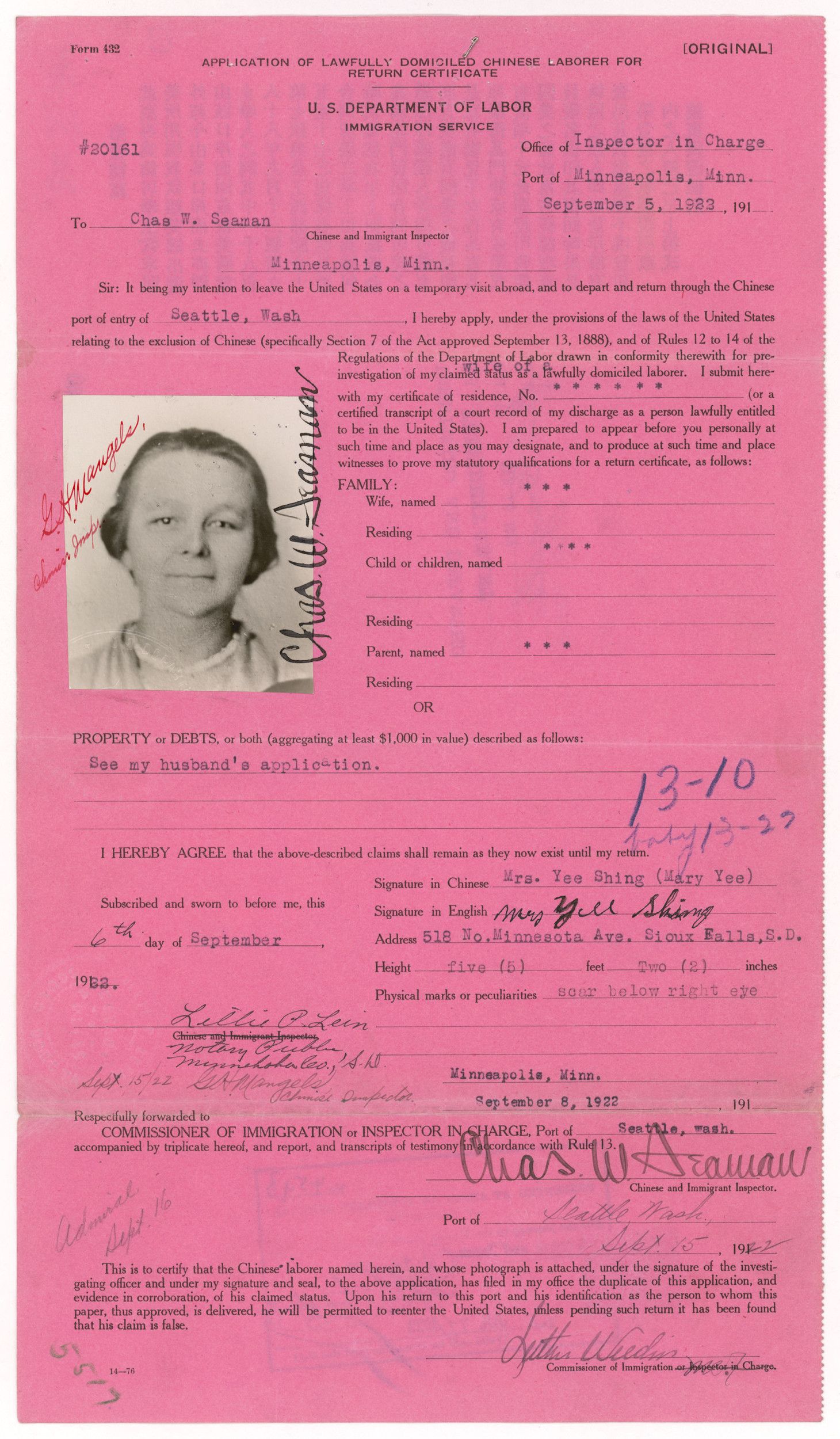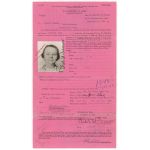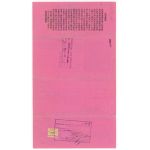Application of Mary Yee for Return Certificate
9/8/1922
Add to Favorites:
Add all page(s) of this document to activity:

Add only page 1 to activity:
Add only page 2 to activity:
In 1922, Yee Shing, a Chinese merchant living in Sioux Falls, South Dakota, and his wife, Mary, wanted to take their family to China to educate their American-born children. Several months before their departure, Yee filed the paperwork for a “return certificate,” establishing his right to come back to America, and ensuring that his children could also return. This was necessary because of the Chinese Exclusion Act of 1882 and its extensions.
Mary, Yee’s American-born wife, was no longer a U.S. citizen because of their marriage. Under the Expatriation Act of 1907, a female U.S. citizen who married a citizen of another nation automatically lost her U.S. citizenship and took on the nationality of her husband. In other words, when Mary married Yee Shing, she became Chinese.
As “a lawfully domiciled Chinese Laborer,” Mary also had to file this paperwork before leaving the country to ensure that she would be allowed to return. She attached her photograph and submitted to an interview. Her return certificate was approved, and the family left Seattle for China on September 16, 1922.
Mary, Yee’s American-born wife, was no longer a U.S. citizen because of their marriage. Under the Expatriation Act of 1907, a female U.S. citizen who married a citizen of another nation automatically lost her U.S. citizenship and took on the nationality of her husband. In other words, when Mary married Yee Shing, she became Chinese.
As “a lawfully domiciled Chinese Laborer,” Mary also had to file this paperwork before leaving the country to ensure that she would be allowed to return. She attached her photograph and submitted to an interview. Her return certificate was approved, and the family left Seattle for China on September 16, 1922.
This primary source comes from the Records of the Immigration and Naturalization Service.
National Archives Identifier: 6341134
Full Citation: Application of Lawfully Domiciled Chinese Laborer for Return Certificate for Mrs. Yee Shing aka Mary Yee; 9/8/1922; Case File of Yee Shee (re: Mary Yee); Chinese Exclusion Act Case Files, ca. 1895 - ca. 1943; Records of the Immigration and Naturalization Service, Record Group 85; National Archives at Seattle, Seattle, WA. [Online Version, https://docsteach.org/documents/document/application-return-mary-yee, April 25, 2024]Activities that use this document
- Immigration to America: Stories and Travels
Created by the National Archives Education Team
Rights: Public Domain, Free of Known Copyright Restrictions. Learn more on our privacy and legal page.


